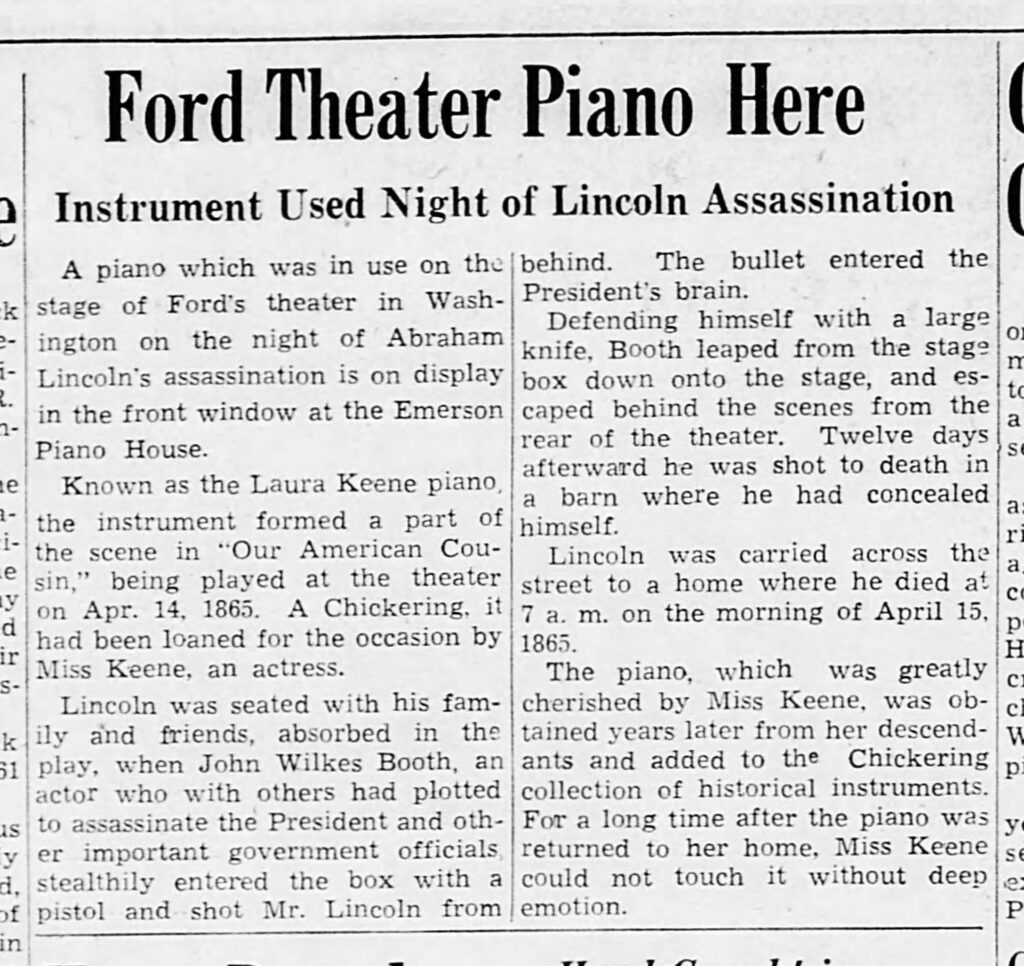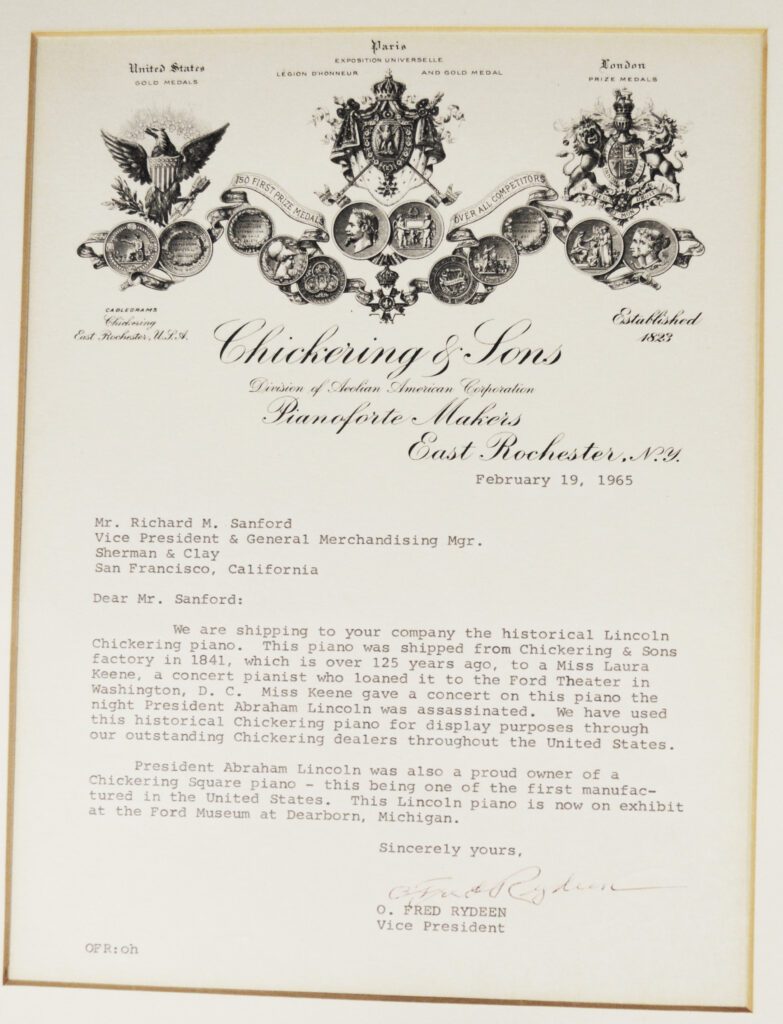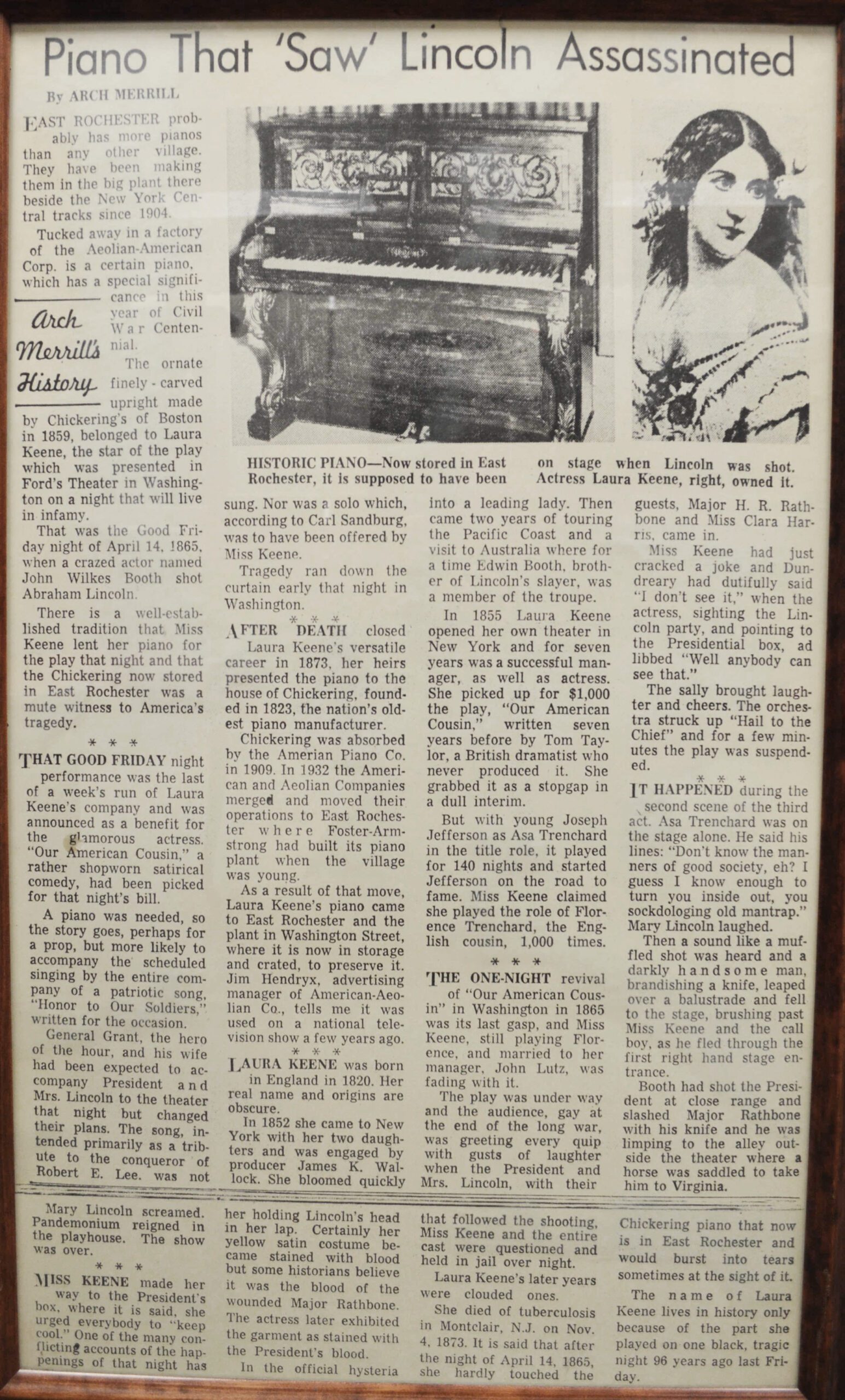This piano was owned by the famous actress Laura Keene, and was present in the Ford Theater on the day of Lincoln’s assassination. For more on that story, see below.
Jonas Chickering founded his piano manufacturing business in 1823, and by the time of his death in 1853, it had become the largest and most prestigious piano maker in the United States. Chickering hired Alpheus Babcock in 1837, and soon thereafter adapted Babcock’s invention, the one piece cast iron frame, later patenting a version for the grand piano. By the 1850s, Chickering’s production had risen to 1500 per year, of which the vast majority were square pianos, along with about one grand piano per week.
Upright pianos like this had been common in Europe from the 1820s, essentially displacing the square piano there by 1850. In the United States, however, the square piano had continued to thrive, becoming larger and more ornate into the 1860s, while upright pianos were quite rare. Chickering had manufactured a few upright pianos in its early years, in styles from the first half of the 19th century, but it was only in 1858 that the company began making uprights in the style that would later become universal, and of which this piano is an early example.
Chickering had begun exhibiting in Europe at the expositions in Paris and London, and was influenced by European designs to a large extent, but included American innovations. The straight strung, semi-oblique layout is French, but with an American full cast iron plate, with agraffes cast into the plate. The action has an over-damper system, allowing for the soft pedal to shift the hammer rail to create an una corda effect, leaving the dampers in place.
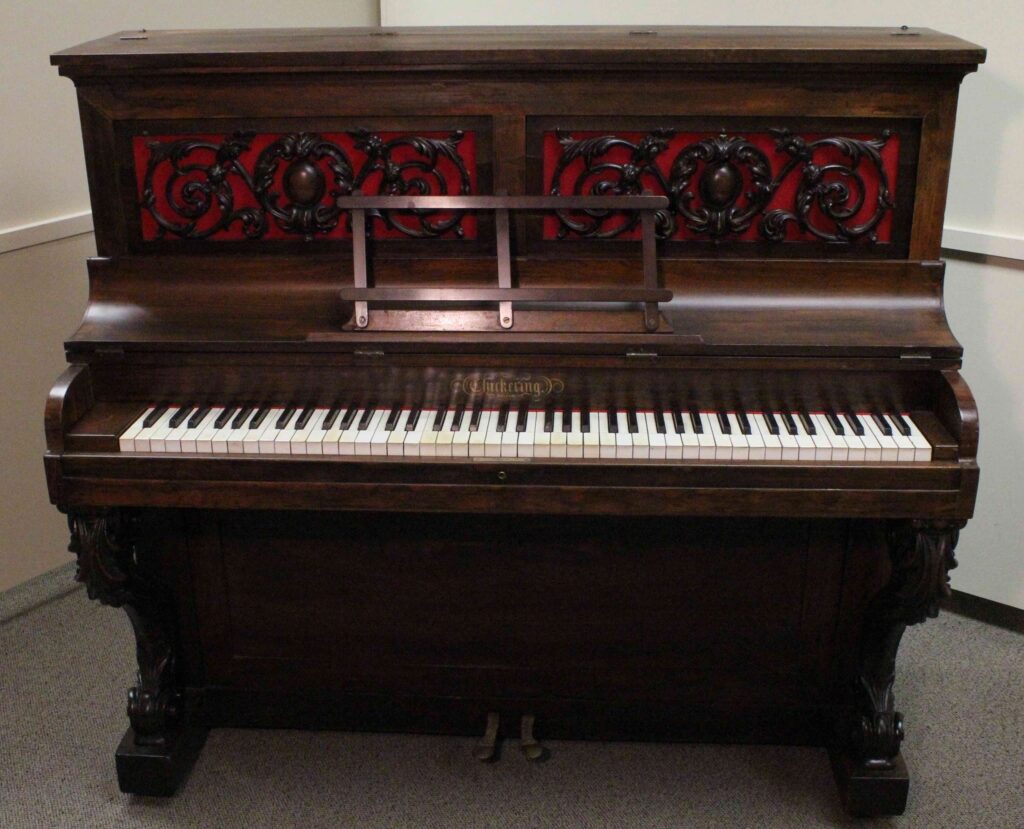

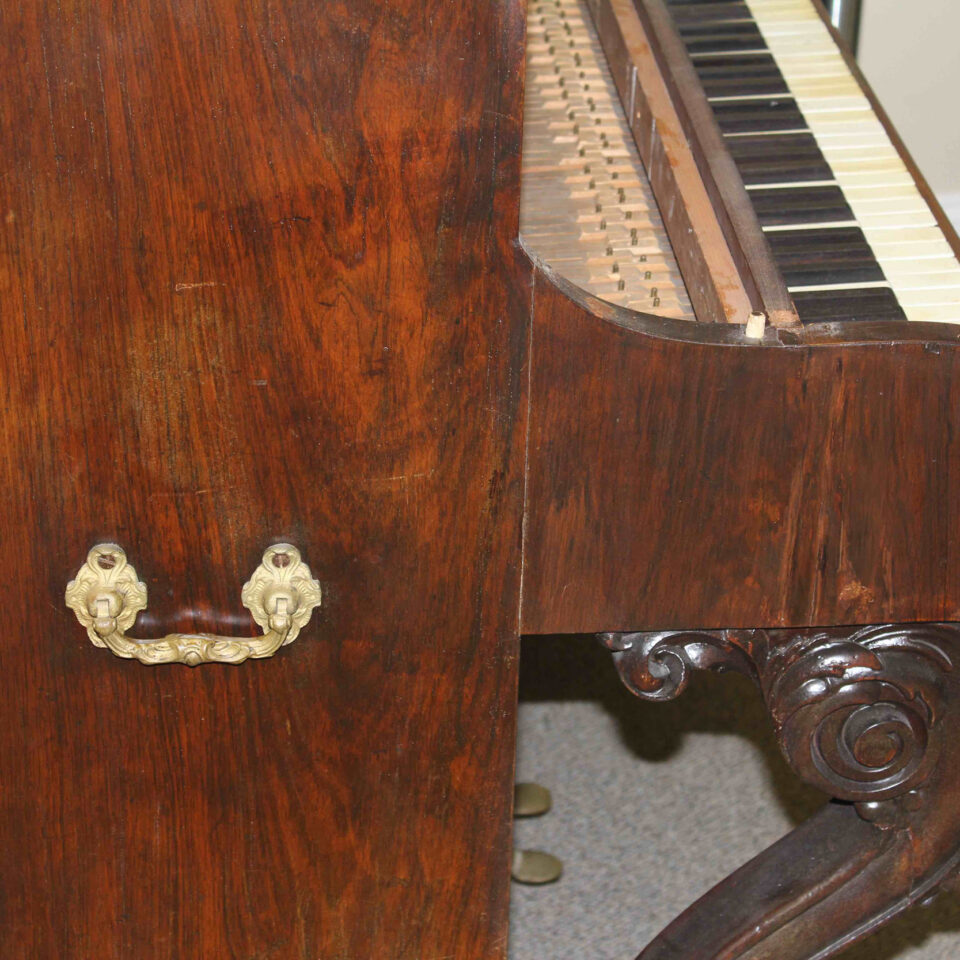
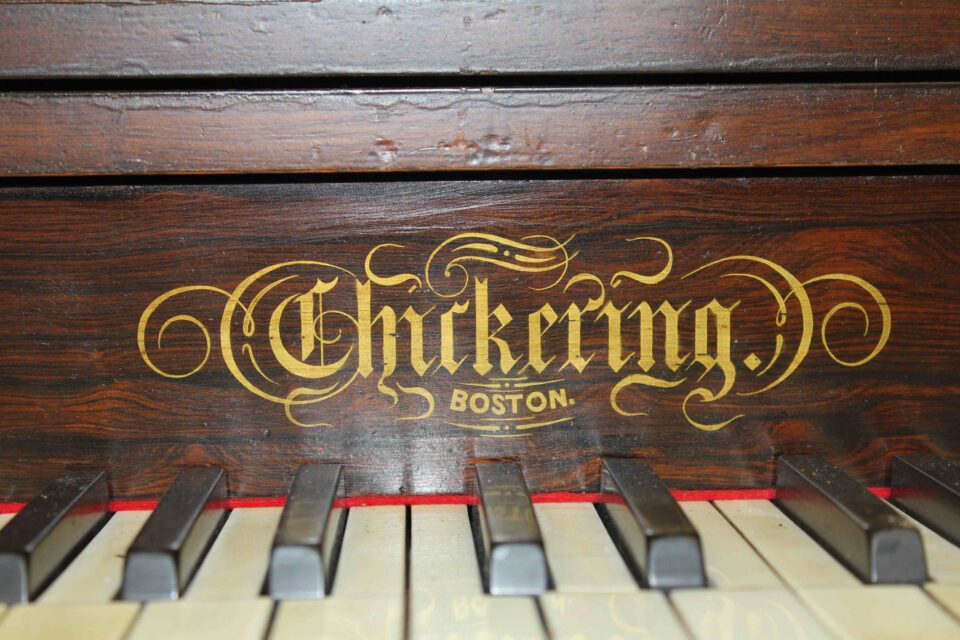

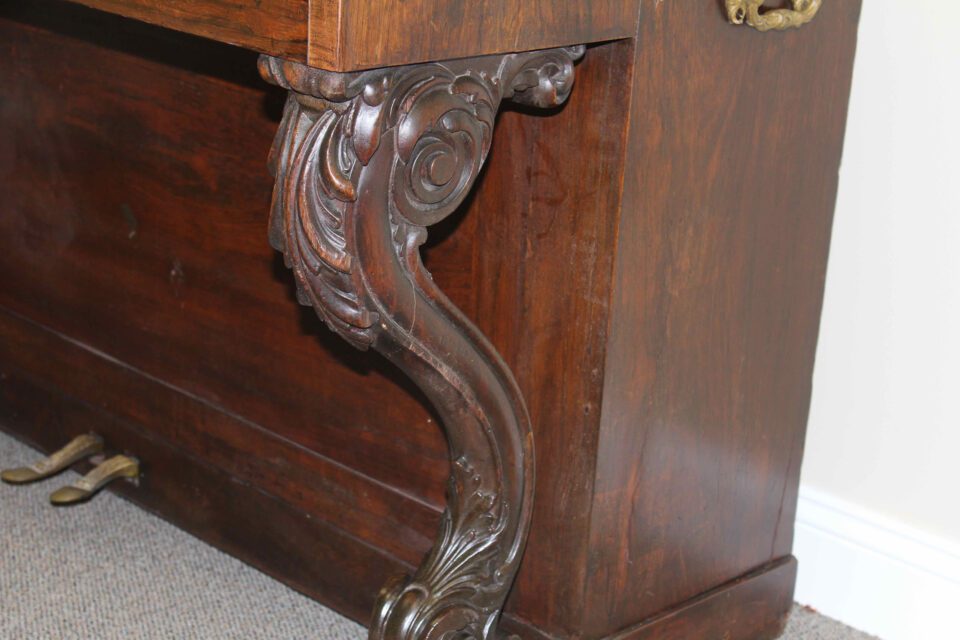
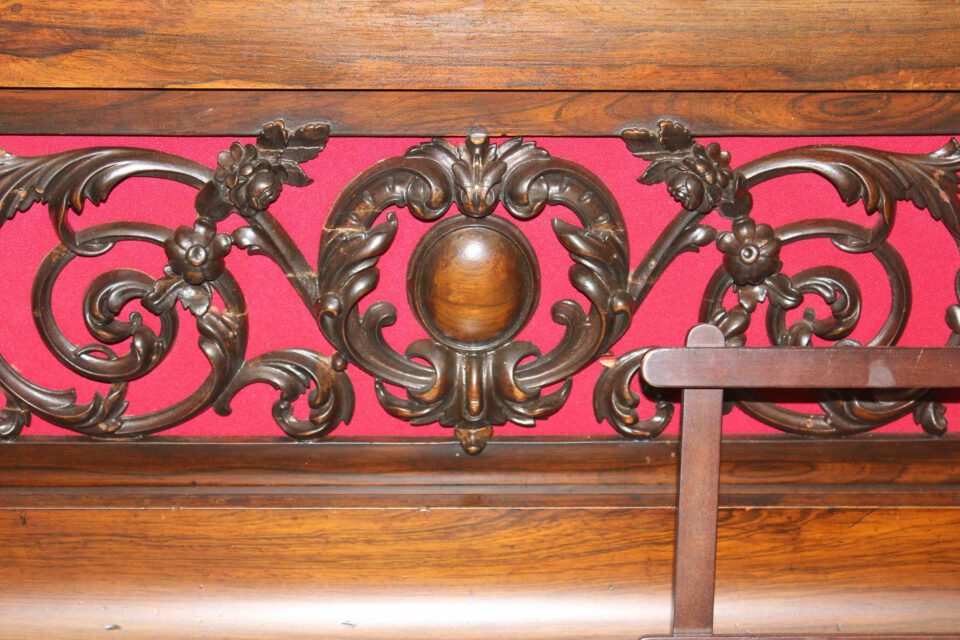
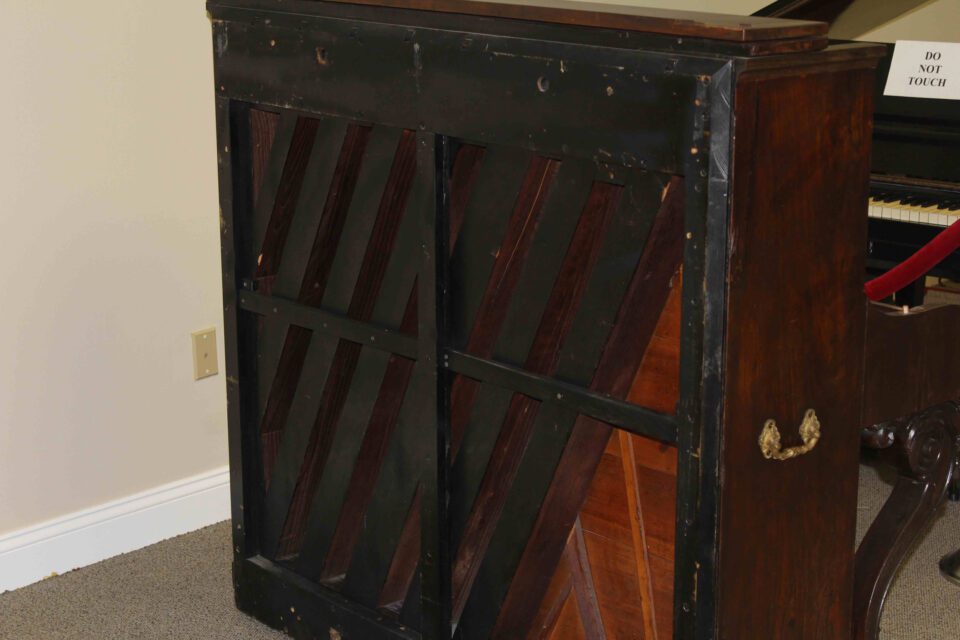
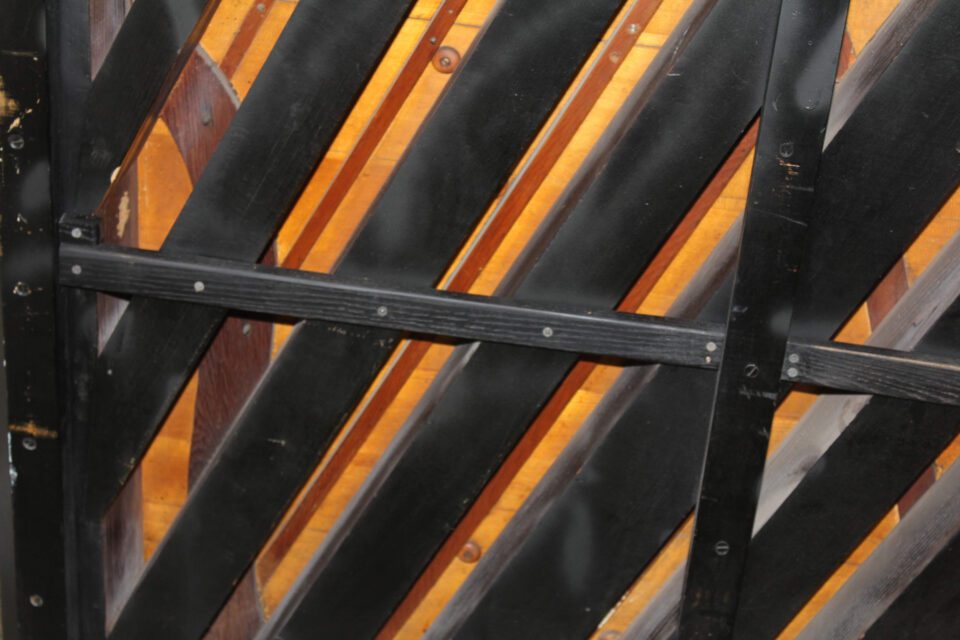
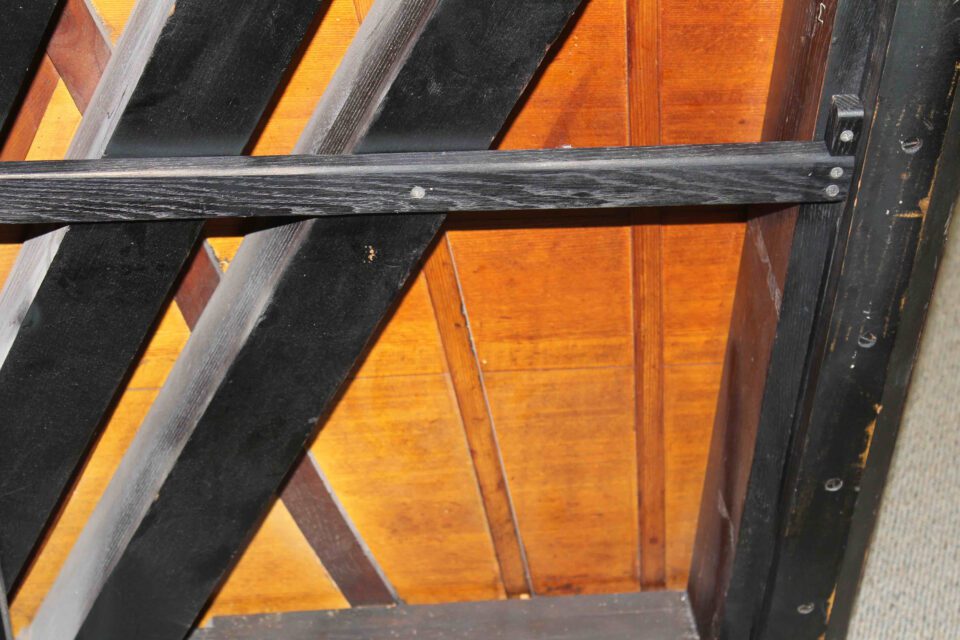
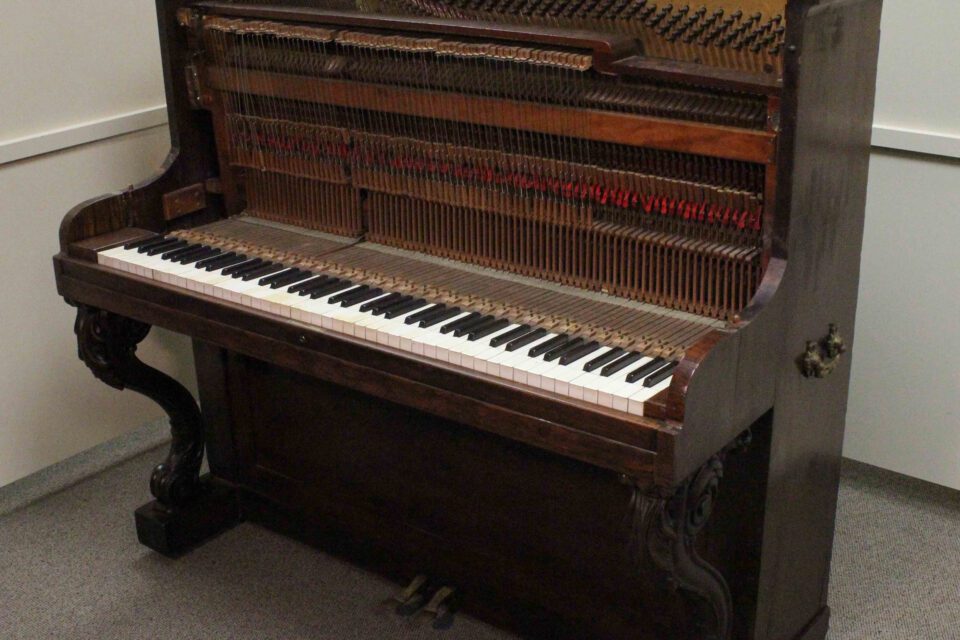

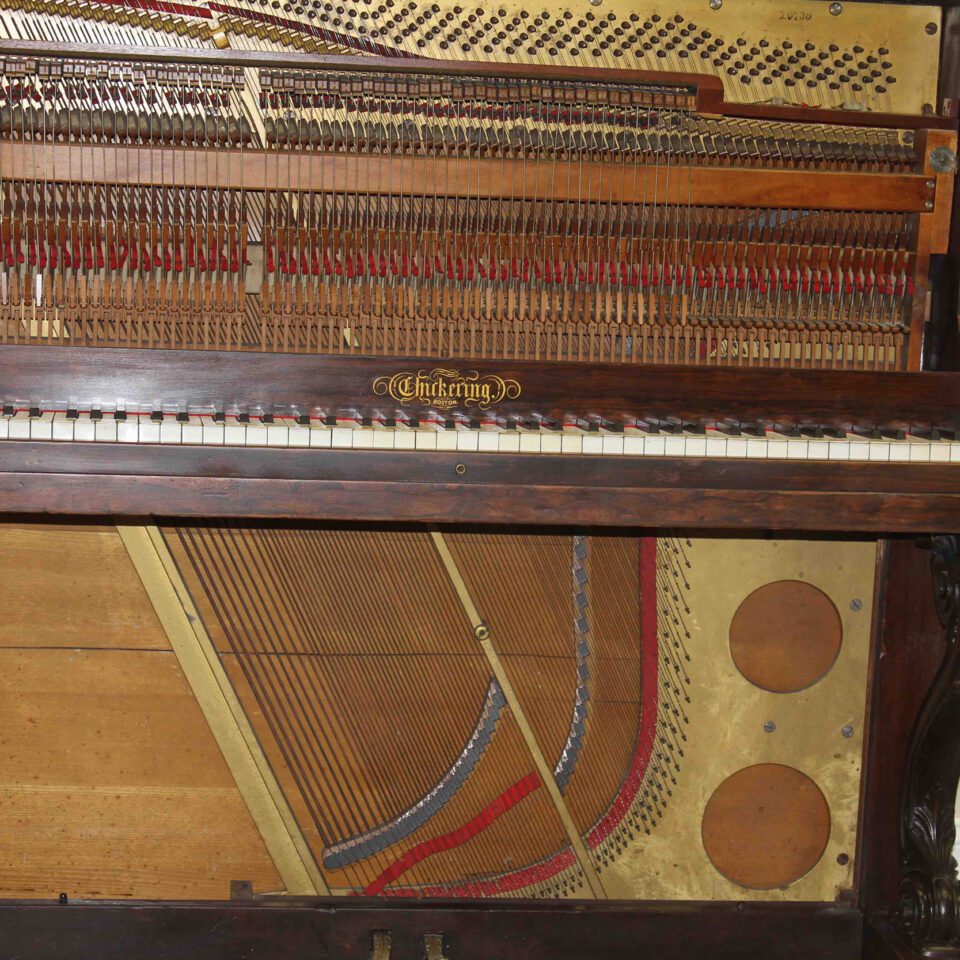
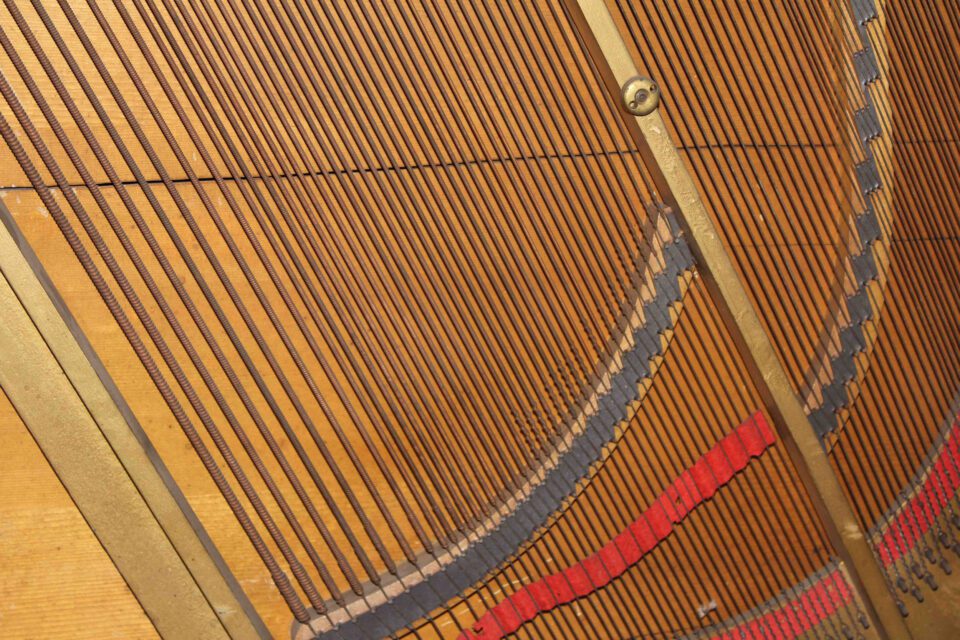
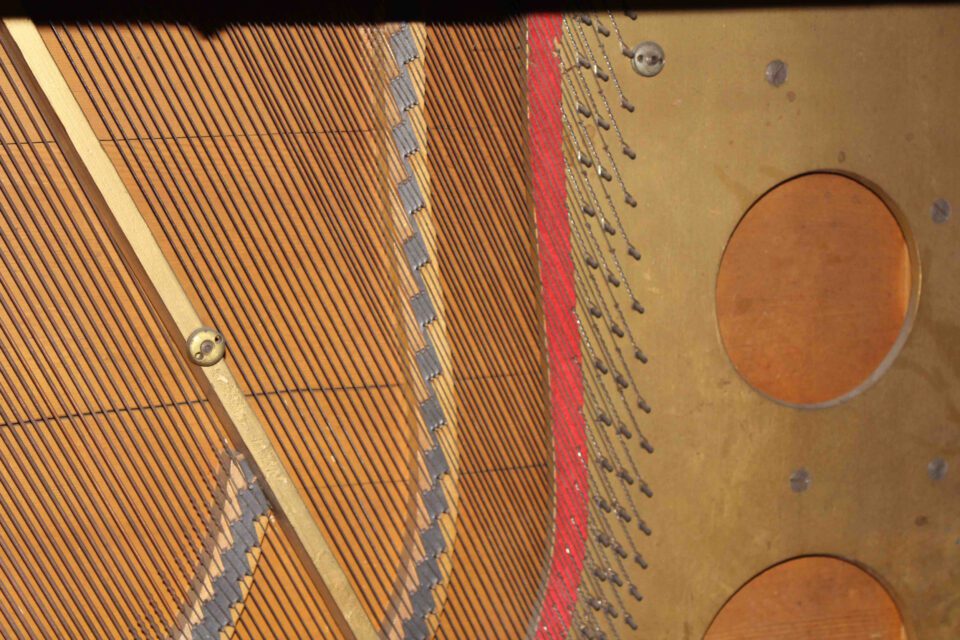
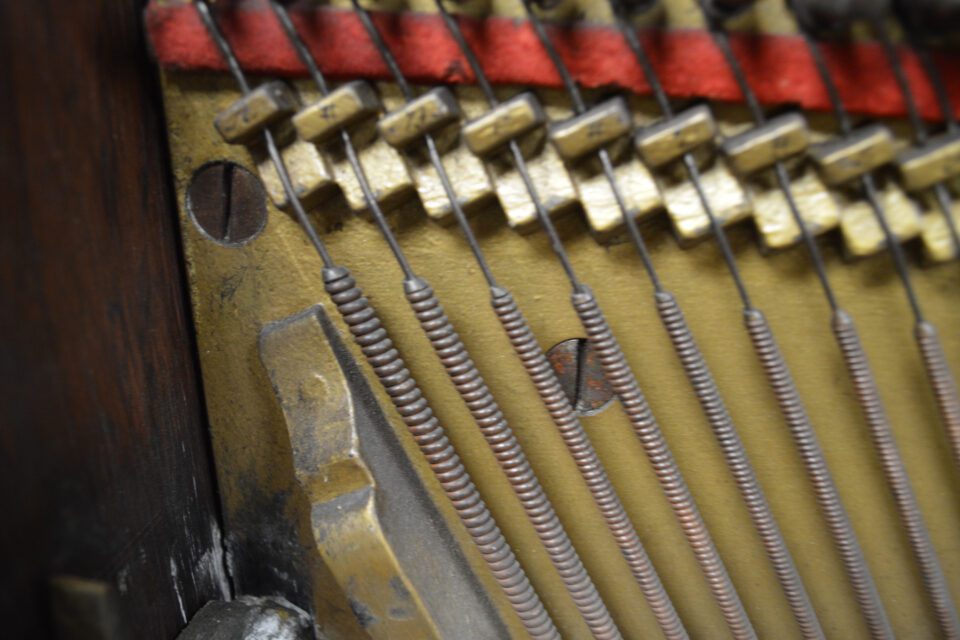
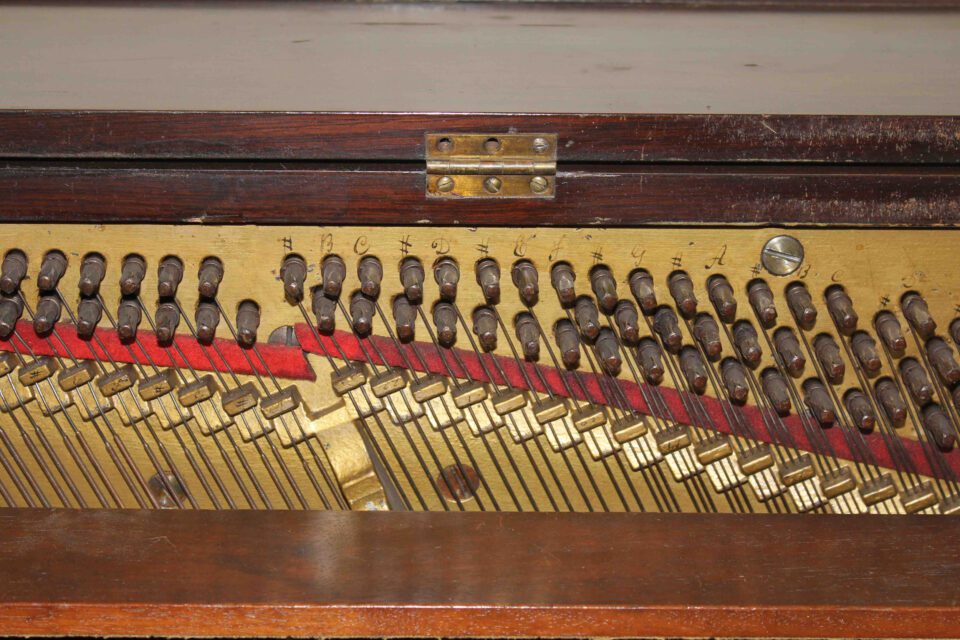
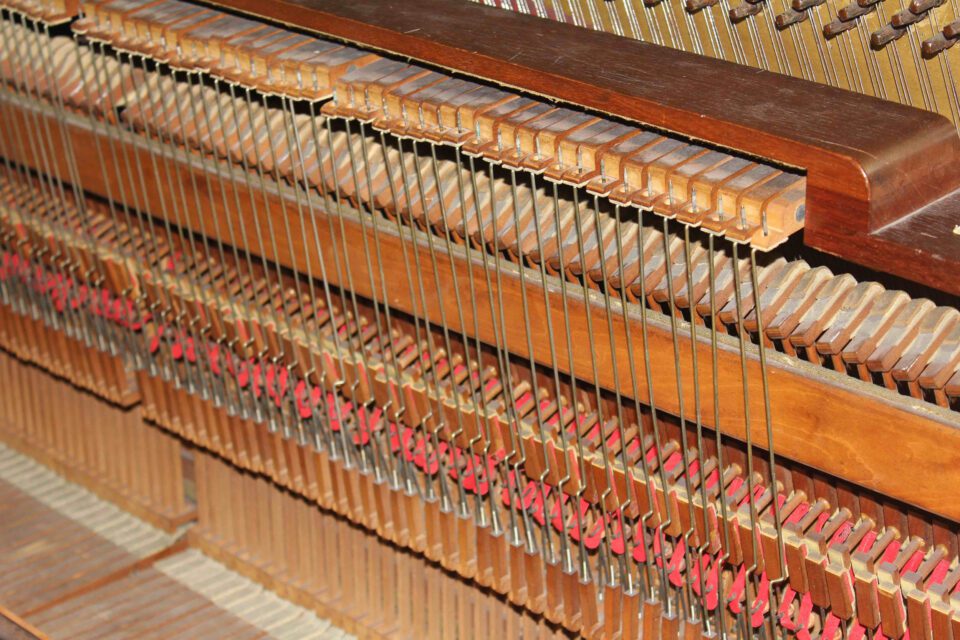
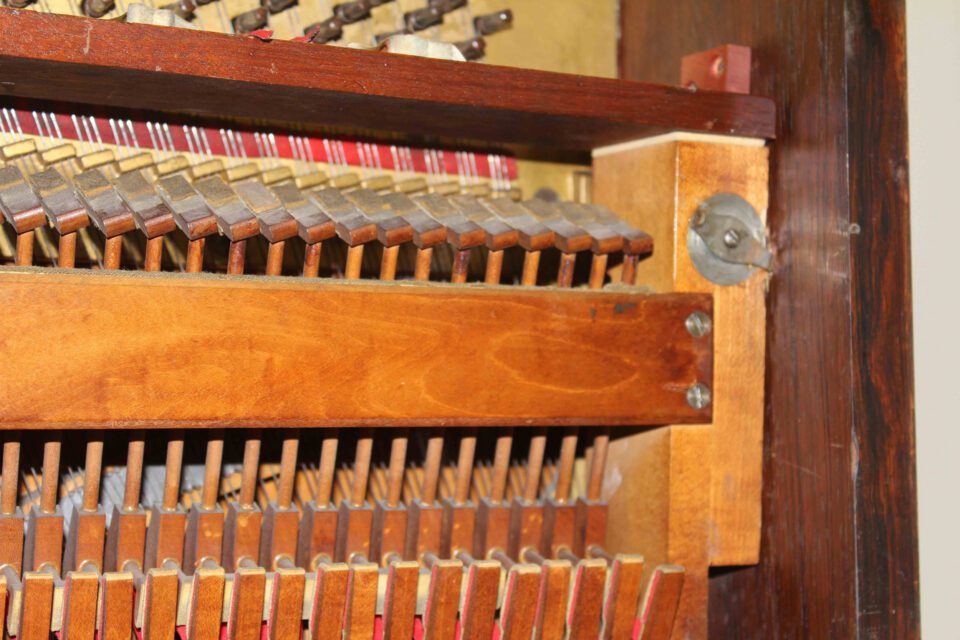
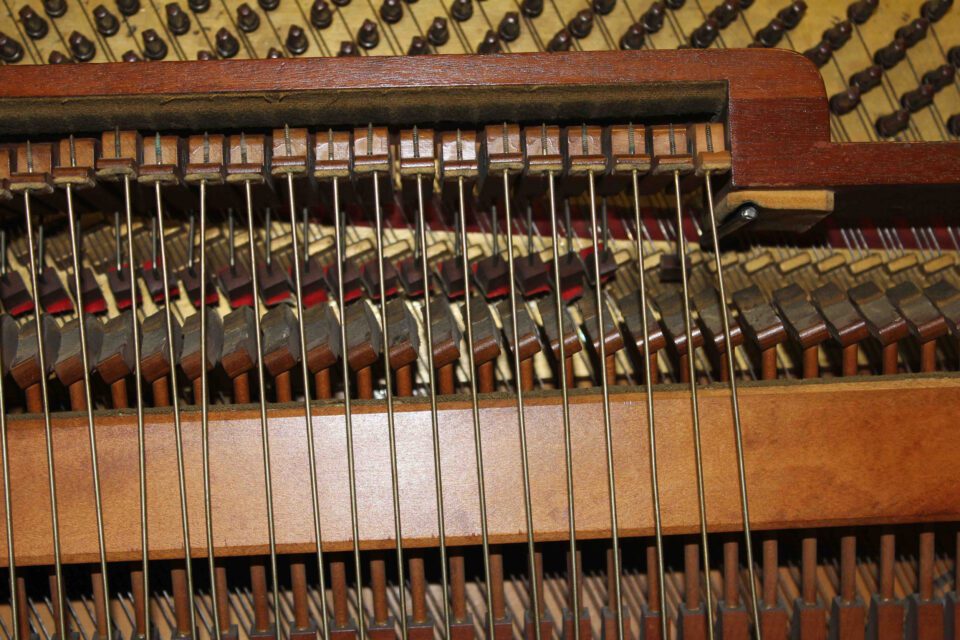
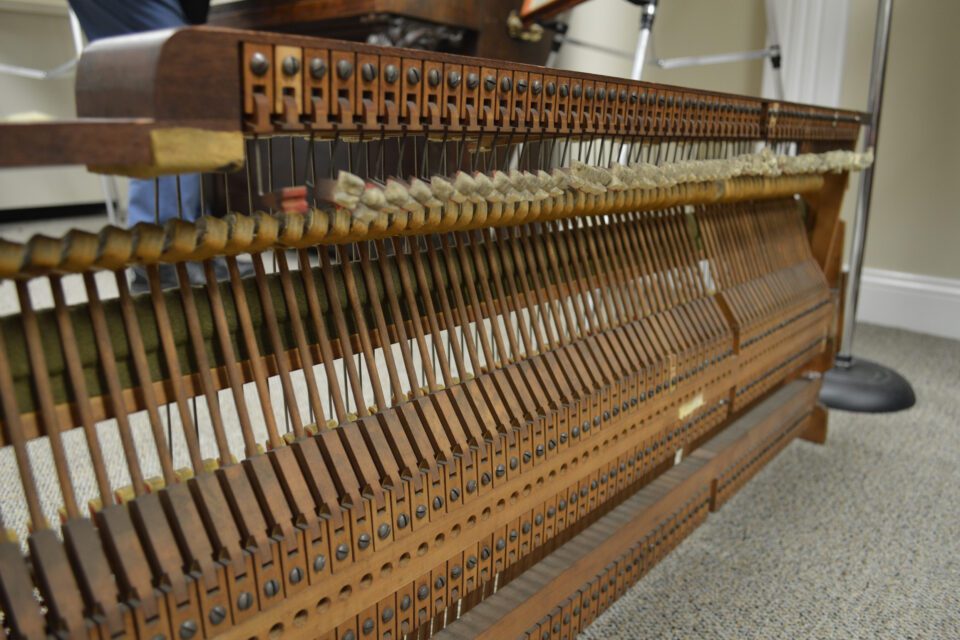
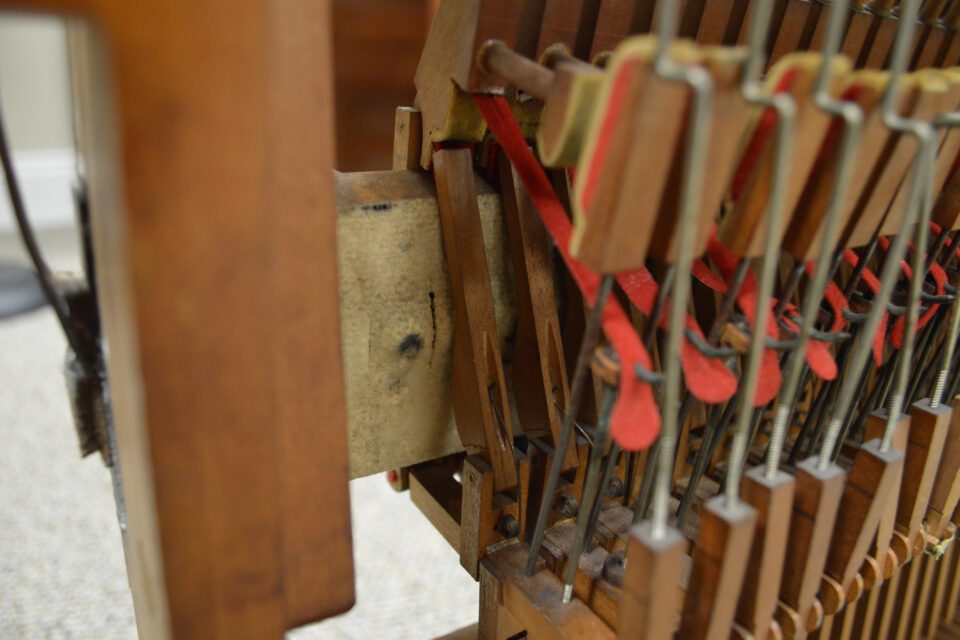
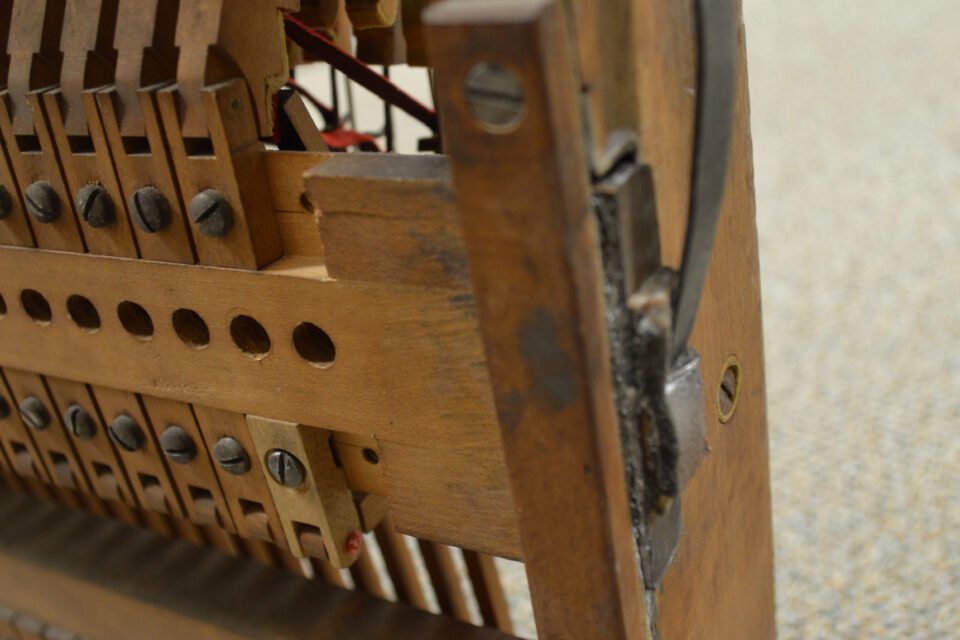
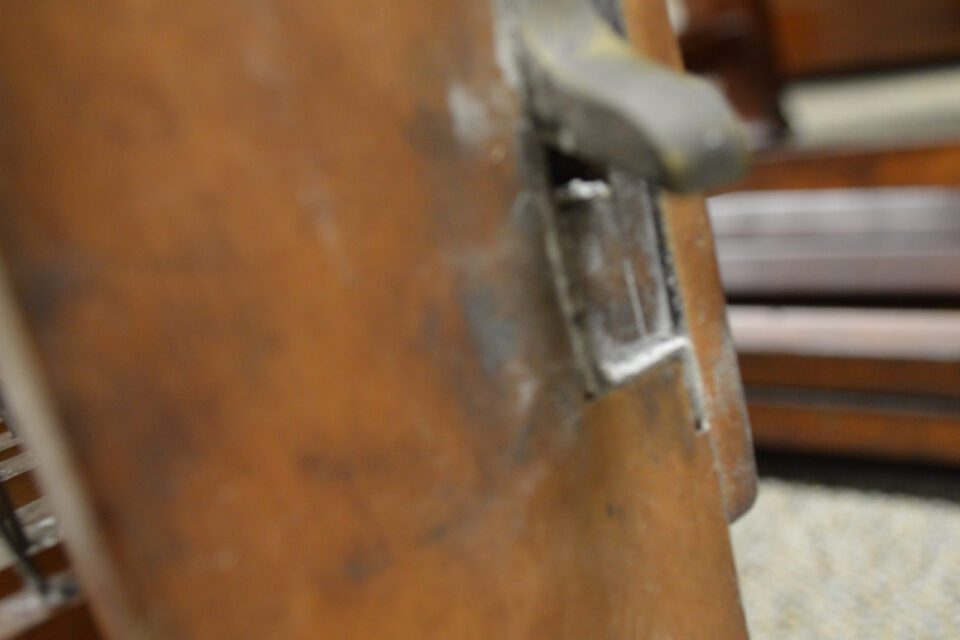
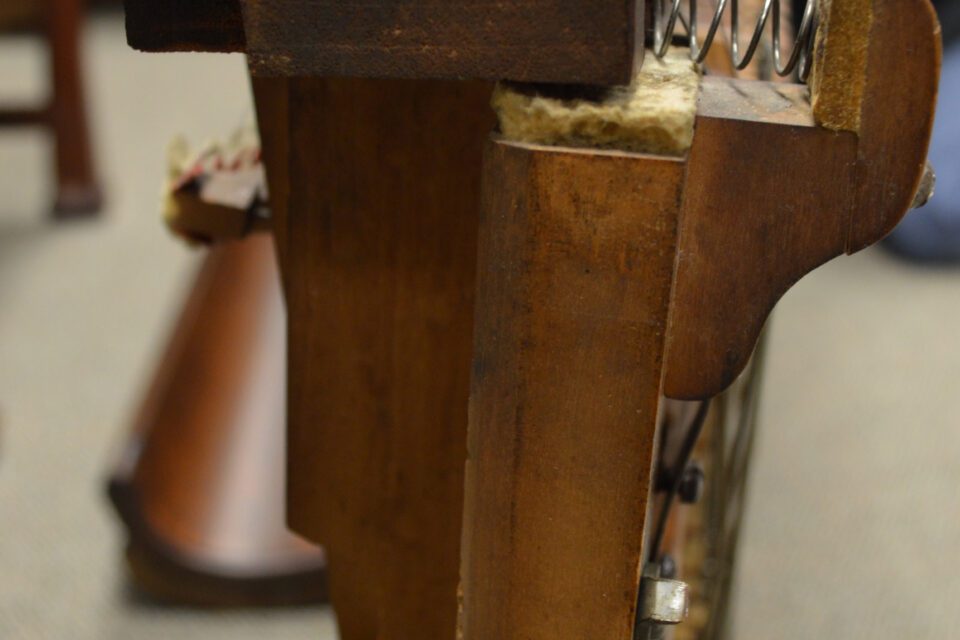


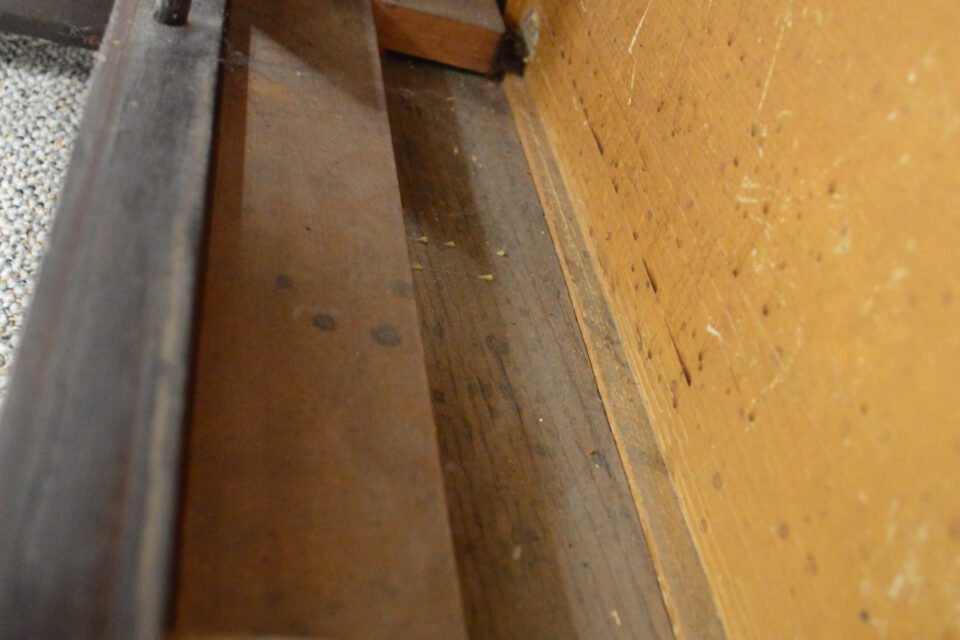
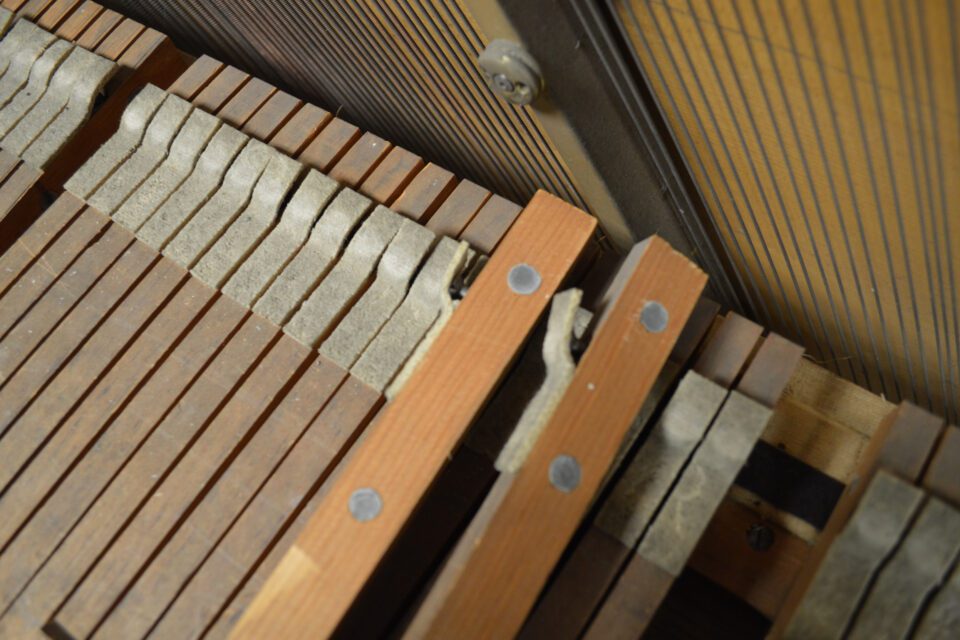
Videos
“The Piano that ‘saw’ Lincoln assassinated”
This piano was in Ford’s Theatre on Good Friday, April 14th, 1865 when president Lincoln was shot. It was five days after Lee had surrendered to Grant and many were celebrating the end of the war. The comedy “Our American Cousin” was playing, starring Laura Keene, one of the most popular actresses of the day. It was also a benefit night for Laura Keene and the president wanted to boost attendance for her.
The piano belonged to Laura Keene, and traveled with her by train as she toured the country. She had it moved to the theater from her room at the Metropolitan Hotel, so that it could be used for several musical interludes scheduled to take place between the three acts of the play. Keene was to play the piano and sing a solo for the debut of a new song, “Honor to Our Soldiers”, written by the theatre’s conductor, William Whithers. Additional musicians were engaged to sing patriotic songs and to make the occasion even more joyous.
When Lincoln was shot during the last act of the show, it is said that Laura Keene made her way to his box and cradled the president’s head in her lap while washing the blood from it, even though Mary Todd Lincoln was there, until he was moved across the street to the boarding house where he died. The piano went back to Laura Keene’s home, but she never played it again because of the painful memories.
Keene’s heirs later sold the piano to the Aeolian-American Corporation, which had absorbed Chickering in 1909, and built Chickering pianos in East Rochester, NY from 1932 until 1982. The company shipped the piano to various dealers around the country as a promotional display from at least 1940 through 1966. Upon the closure of the Aeolian-American plant in 1982, the piano was placed in the East Rochester City Hall, from which the PTG Foundation acquired it in 2006.
For a more detailed account, read the following article by Arch Merrill, published in the Rochester Democrat and Chronicle, April 16, 1961:
